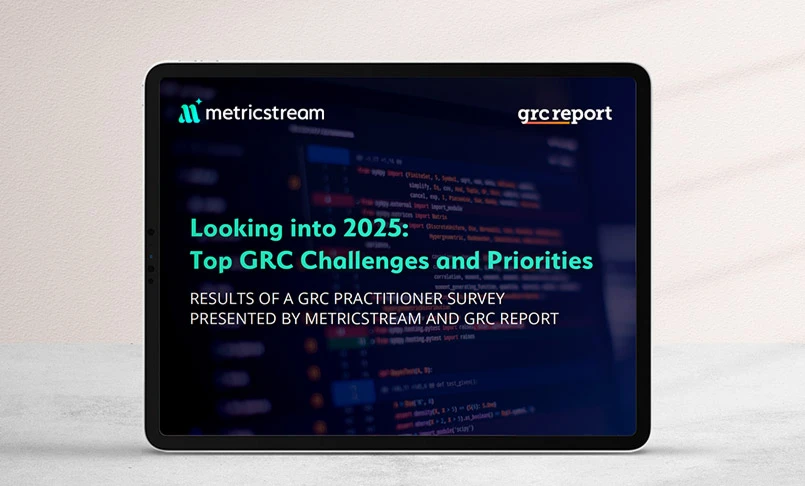Introduction
Every business decision involves risk, as markets shift, competitors emerge, and unexpected challenges arise. Some risks are obvious, others hidden, and without preparation, they can disrupt operations or threaten long-term survival. Understanding vulnerabilities and planning proactively allows organizations to mitigate threats and seize opportunities. This is where a risk management plan comes in. Simply put, risk is the likelihood of an event and its potential impact on business operations.
Key Takeaways
- Risk is Inevitable: Every business decision involves some level of uncertainty, making proactive risk management essential for long-term success.
- Purpose of a Risk Management Plan: It provides a structured approach to identify, assess, and mitigate risks while supporting informed decision-making, operational stability, regulatory compliance, and stakeholder confidence.
- Core Inclusions: A risk management plan should include risk identification, assessment, prioritization, mitigation strategies, roles and responsibilities, monitoring, reporting, and contingency plans.
- Key Components: Effective plans rely on a risk register, risk assessment matrix, mitigation controls, communication plan, continuous monitoring, governance integration, and measurable KPIs.
- Importance for Business: Risk management plans protect against financial, operational, legal, and reputational threats, ensuring business continuity and resilience.
- Step-by-Step Implementation: A seven-step approach—establish context, identify risks, analyze and prioritize risks, implement controls, contingency planning, monitor and review, and effective communication—ensures comprehensive risk coverage.
- Dynamic and Continuous: Risk management is iterative; continuous monitoring, regular reviews, and adaptive controls keep the organization prepared for emerging threats and changing market conditions.
- Strategic Advantage: Beyond protection, a well-executed risk management plan allows businesses to anticipate opportunities, make informed decisions, and maintain a competitive edge.
What is a risk management plan?
A risk management plan is an essential document designed to safeguard businesses from potential disruptions by systematically addressing risks. It involves identifying risks, analyzing their impact, and establishing measures to mitigate them before they escalate into crises. The plan also provides a framework for continuous monitoring and adjustment, ensuring that organizations can adapt to both existing and new threats.
Additionally, the plan also includes protocols for ongoing monitoring and review, ensuring that the business remains agile in the face of new risks or changes in the external environment. Continuous adjustments essentially allow the organization to adapt and stay resilient, making the risk management plan a dynamic tool for safeguarding long-term business continuity and success
What is the Purpose of a Risk Management Plan?
A risk management plan serves as a blueprint for identifying, analyzing, and mitigating risks that could disrupt an organization’s operations or prevent it from achieving strategic objectives. Its purpose is to provide a structured approach that helps organizations:
- Anticipate and Prepare for Risks:By proactively identifying potential threats—such as cybersecurity breaches, supply chain disruptions, or regulatory changes—organizations can develop strategies before issues occur.
- Minimize Impact of Uncertainties: Effective risk planning reduces the likelihood and consequences of unforeseen events, ensuring operational continuity.
- Support Informed Decision-Making: With a clear understanding of potential risks, leadership can make strategic choices that balance opportunity and exposure.
- Enhance Stakeholder Confidence: Investors, partners, and customers gain trust in organizations that demonstrate proactive risk management.
- Regulatory and Compliance Alignment: Risk management plans help organizations meet legal, industry, and contractual obligations consistently.
For example, using platforms like MetricStream allows companies to centralize risk data, monitor trends, and automate mitigation efforts, enhancing overall strategic oversight.
What is Included in a Risk Management Plan?
A comprehensive risk management plan captures all critical aspects of managing risk within an organization. Key inclusions are:
- Risk Identification: Document all possible risks—internal (employee errors, system failures) and external (market volatility, regulatory changes).
- Risk Assessment: Evaluate risks based on likelihood and impact, often through qualitative scoring (low, medium, high) or quantitative metrics (financial loss, downtime).
- Risk Prioritization: Rank risks according to severity, focusing resources on the highest-impact threats.
- Mitigation Strategies: Specifp ecify actions to reduce risk, such as implementing cybersecurity controls, conducting staff training, or diversifying suppliers.
- Roles and Responsibilities: Define clear accountability for managing each risk, ensuring stakeholders understand their obligations.
- Monitoring and Reporting: Establish protocols for tracking risk mitigation, updating plans, and reporting progress to management and stakeholders.
- Contingency and Recovery Plans: Include backup procedures and crisis response strategies to maintain continuity if a risk materializes.
For instance, organizations can integrate MetricStream to automate risk tracking, produce audit-ready reports, and ensure consistent documentation across all risk categories.
Key Components of a Risk Management Plan
A well-structured risk management plan incorporates several interrelated components that together ensure risks are effectively managed:
- Risk Register: A centralized repository of all identified risks, including descriptions, potential impact, probability, and assigned owners. This serves as the primary reference for all risk-related decisions.
- Risk Assessment MatrixA visual tool mapping risk probability against impact to prioritize responses and resource allocation.
- Mitigation Plans and Controls: Detailed actions for reducing risk exposure, such as deploying firewalls for cybersecurity, implementing process controls, or updating compliance policies.
- Communication Plan: Guidelines on how risk information is shared with employees, management, regulators, and other stakeholders to maintain transparency.
- Continuous Monitoring: Ongoing evaluation of risk status, emerging threats, and effectiveness of mitigation strategies to adapt proactively.
- Integration with Governance and Compliance: Ensures alignment with organizational policies, regulatory frameworks, and industry standards.
KPIs and Metrics for Risk Performance: Define measurable indicators like incident frequency, downtime, financial exposure, or audit findings to track the effectiveness of risk management activities.
Using platforms like MetricStream, organizations can automate monitoring, centralize risk data, and generate actionable insights, making the plan more dynamic, responsive, and audit-ready.
Why is a Risk Management Plan Important for Your Business?
A risk management plan is important for businesses because it identifies and eliminates potential threats before they become costly disruptions. By assessing risks early, companies can avoid financial losses, legal issues, and operational setbacks, ensuring smooth operations and sustained growth.
Whether you are focusing on maximizing growth or consolidating existing resources, it's undeniable that strategic planning is key. Yes, your market strategies matter. Yes, your financial planning is pivotal. But an often overlooked, aspect that forms the bedrock of your organization's sustainability is a smart risk management plan.
One may argue that with finite resources, a business needs to be aimed at revenue generation activities rather than this perceived contingency element. This argument does make sense but only till the time the what-ifs become what now.
Informed Decision-Making Guidance:
With a bird’s-eye view of all probable risks, your decision-making evolves from being reactive to becoming calculated and future-centric, aiding teams to make calculated decisions rather than banking solely on gut feelings.
Operational Stability:
It also serves as an excellent buffer during unexpected storms of financial losses or reputation damages, adding a level of predictability and stability to your operations.
Reducing Legal Complications:
A world increasingly dominated by legislation means businesses need to toe the line or risk hefty penalties and brand erosion. Having a comprehensive risk management plan helps your organization abide by the ever-evolving regulations and avoid such damaging scenarios.
Reputation Management:
The modern market runs as much on performance as it does on image and credibility. Therefore, a risk management plan ensures maintaining the esteem and confidence stakeholders, customers, and the public hold in your organization.
A Step-by-Step Guide to Creating a Successful Risk Management Plan
Here are the 7 steps to create a risk management plan.
A step-by-step breakdown of a risk management plan includes the following:
- Establish context
- Identify risks
- Analyze and prioritize risks
- Implement controls
- Contingency planning
- Monitor and review
- Effective communication
Establish Context
Creating an effective risk management plan begins by identifying the setting of your corporate tale - the business context. Take some time to perceive your company from a 10,000-feet perspective. Try to discern your company’s mission, its core values, the market it operates in, and the customers it serves.
Are there unique factors to consider, such as international regulatory complexities or certain demographic considerations? Setting the right context is much like having the right blueprint in hand; it offers clear guidelines to build a strong structure.
Once you understand the context, you can then begin the quest to recognize potential risks that may surface.
Identify Risks
A meticulously detailed risk identification process illuminates the path ahead, clarifying the threats that lurk in the shadow of your operations. Risks could emerge from numerous avenues - operational procedures, finance, legal obligations, technology, environment, reputation, or even cybersecurity.
Rigorously assess these areas, engage team members, gather insights, brainstorm scenarios, and apply tools like SWOT analysis or the risk assessment matrix. Remember, risk can originate from within or beyond your business boundaries.
Do not exclude even the tiniest detail. The more you delve into it, the better. Enlist everything - from minor supply chain disruptions to catastrophic events like earthquakes.
Analyze and Prioritize Risks
Analyzing risks is where the rubber meets the road. Prioritizing them efficiently and strategically plays an integral part in forming a successful risk management plan.
Leverage your context setting and risk identification exercises to assess the likelihood and potential impact of each risk. Evaluate how each risk would affect your organization's ability to achieve its strategic objectives.
Use risk analysis techniques to provide valuable input for decision-making. From this standpoint, one can pinpoint those critical risks that demand immediate attention and segregate them from lesser, manageable threats. For example, Rate them on a scale of 1 to 5 for likelihood and severity, then, multiply these numbers to get a risk score. A higher score indicates a high-priority risk.
Devise and Implement ‘Controls’
Once you've scrutinized the potential risks and organized them into a comprehensive list, it's time to take proactive measures. Controls become your armor, shielding your project against the uncertainties that were identified. These protective measures serve a crucial role in mitigating, transferring, accepting, or even avoiding risks altogether.
It's not just about having a defense; it's about strategically deploying actions to keep potential challenges in check. Say, a manufacturing project is facing potential supply chain disruptions. A control measure might involve diversifying suppliers or maintaining a strategic stockpile of essential materials, providing a cushion against unexpected delays.
Your goal here is to tame the unruly beast of risk without stifling your business' competitive edge.
Contingency Planning
Recognize that your risk landscape is always evolving. As you address or mitigate current risks, new project activities may introduce unknown challenges. Therefore, it's essential to have a change plan in place.
Contingency planning also involves reconsidering existing risks if there's a shift, so ensure your process is adaptable enough to accommodate necessary adjustments
Monitor and Review
Creating a risk management plan isn't a once-and-done task. You'll have to keep refining the plan as you walk down your business path. Consider this your watchdog phase.
Consistent monitoring and review provide insights into whether your controls are effectively combatting risks, thereby ensuring that your risk management plan is achieving its purpose. Set regular review periods, track progress, perform audits, encourage feedback, and ensure your measures evolve with the business landscape.
Effective Communication
Finally, formalize your risk management plan by documenting every stage, decision, and measure. Such documentation ensures accountability and fosters a culture of risk awareness throughout the organization.
Not only that, but this archive of information also becomes an invaluable resource for future risk management exercises.
Taking this seven-step journey is the most logical way to manage risk, but it is not always foolproof. The dynamic nature of business means that implementing these steps successfully needs a judicious mix of expert oversight and technology support.
Constructing comprehensive plans of this nature can indeed be a complex undertaking, and MetricStream’s suite of ConnectedGRC solution understands the stakes at play. Recognizing the intricacies of this process, our suite of solutions is precisely the arsenal needed to serve as your strategic ally in the construction of a robust risk management plan.
Frequently Asked Questions
Q1: What does a risk management plan include?
A risk management plan includes several key elements: risk identification, risk analysis, risk mitigation strategies, monitoring procedures, and communication protocols.
Q2: What are the 5 steps to a risk management plan?
The five steps to a risk management plan are:
- Identify Risks – Recognize potential threats that could affect the business.
- Analyze Risks – Assess the likelihood and potential impact of each risk.
- Evaluate Risks – Prioritize risks based on severity and probability.
- Mitigate Risks – Develop strategies to minimize or eliminate risks.
- Monitor and Review – Continuously track risks and adjust the plan as needed.
Q3: How often should a risk management plan be updated?
Regular updates are key to a dynamic risk management plan. Aim for reviews at major project milestones or whenever there are significant changes in the project environment. This ensures your plan remains relevant and effective throughout the project lifecycle.
Q4: Is risk management only for large-scale projects, or is it applicable to smaller endeavors as well?
Risk management is relevant across projects of all sizes. Even smaller endeavors encounter uncertainties, and having a tailored risk management plan helps mitigate potential disruptions, ensuring smoother project execution.
Q5: What role does employee training play in risk management?
Employee training is a vital component of risk management. It ensures that your team is not only aware of potential risks but also equipped with the skills to implement mitigation strategies effectively. A well-trained workforce enhances the overall impact of your risk management plan with great effect.
Q6: Can a risk management plan be beneficial beyond project completion?
Of course. A meticulously crafted risk management plan extends its benefits well beyond project completion. Serving as a rich repository of insights and lessons learned, the plan becomes a valuable knowledge base for the organization. Post-project evaluations captured in the plan offer a much more human and nuanced understanding of risk dynamics, informing future decision-making and contributing to continuous improvement.
Every business decision involves risk, as markets shift, competitors emerge, and unexpected challenges arise. Some risks are obvious, others hidden, and without preparation, they can disrupt operations or threaten long-term survival. Understanding vulnerabilities and planning proactively allows organizations to mitigate threats and seize opportunities. This is where a risk management plan comes in. Simply put, risk is the likelihood of an event and its potential impact on business operations.
Key Takeaways
- Risk is Inevitable: Every business decision involves some level of uncertainty, making proactive risk management essential for long-term success.
- Purpose of a Risk Management Plan: It provides a structured approach to identify, assess, and mitigate risks while supporting informed decision-making, operational stability, regulatory compliance, and stakeholder confidence.
- Core Inclusions: A risk management plan should include risk identification, assessment, prioritization, mitigation strategies, roles and responsibilities, monitoring, reporting, and contingency plans.
- Key Components: Effective plans rely on a risk register, risk assessment matrix, mitigation controls, communication plan, continuous monitoring, governance integration, and measurable KPIs.
- Importance for Business: Risk management plans protect against financial, operational, legal, and reputational threats, ensuring business continuity and resilience.
- Step-by-Step Implementation: A seven-step approach—establish context, identify risks, analyze and prioritize risks, implement controls, contingency planning, monitor and review, and effective communication—ensures comprehensive risk coverage.
- Dynamic and Continuous: Risk management is iterative; continuous monitoring, regular reviews, and adaptive controls keep the organization prepared for emerging threats and changing market conditions.
- Strategic Advantage: Beyond protection, a well-executed risk management plan allows businesses to anticipate opportunities, make informed decisions, and maintain a competitive edge.
What is a risk management plan?
A risk management plan is an essential document designed to safeguard businesses from potential disruptions by systematically addressing risks. It involves identifying risks, analyzing their impact, and establishing measures to mitigate them before they escalate into crises. The plan also provides a framework for continuous monitoring and adjustment, ensuring that organizations can adapt to both existing and new threats.
Additionally, the plan also includes protocols for ongoing monitoring and review, ensuring that the business remains agile in the face of new risks or changes in the external environment. Continuous adjustments essentially allow the organization to adapt and stay resilient, making the risk management plan a dynamic tool for safeguarding long-term business continuity and success
What is the Purpose of a Risk Management Plan?
A risk management plan serves as a blueprint for identifying, analyzing, and mitigating risks that could disrupt an organization’s operations or prevent it from achieving strategic objectives. Its purpose is to provide a structured approach that helps organizations:
- Anticipate and Prepare for Risks:By proactively identifying potential threats—such as cybersecurity breaches, supply chain disruptions, or regulatory changes—organizations can develop strategies before issues occur.
- Minimize Impact of Uncertainties: Effective risk planning reduces the likelihood and consequences of unforeseen events, ensuring operational continuity.
- Support Informed Decision-Making: With a clear understanding of potential risks, leadership can make strategic choices that balance opportunity and exposure.
- Enhance Stakeholder Confidence: Investors, partners, and customers gain trust in organizations that demonstrate proactive risk management.
- Regulatory and Compliance Alignment: Risk management plans help organizations meet legal, industry, and contractual obligations consistently.
For example, using platforms like MetricStream allows companies to centralize risk data, monitor trends, and automate mitigation efforts, enhancing overall strategic oversight.
What is Included in a Risk Management Plan?
A comprehensive risk management plan captures all critical aspects of managing risk within an organization. Key inclusions are:
- Risk Identification: Document all possible risks—internal (employee errors, system failures) and external (market volatility, regulatory changes).
- Risk Assessment: Evaluate risks based on likelihood and impact, often through qualitative scoring (low, medium, high) or quantitative metrics (financial loss, downtime).
- Risk Prioritization: Rank risks according to severity, focusing resources on the highest-impact threats.
- Mitigation Strategies: Specifp ecify actions to reduce risk, such as implementing cybersecurity controls, conducting staff training, or diversifying suppliers.
- Roles and Responsibilities: Define clear accountability for managing each risk, ensuring stakeholders understand their obligations.
- Monitoring and Reporting: Establish protocols for tracking risk mitigation, updating plans, and reporting progress to management and stakeholders.
- Contingency and Recovery Plans: Include backup procedures and crisis response strategies to maintain continuity if a risk materializes.
For instance, organizations can integrate MetricStream to automate risk tracking, produce audit-ready reports, and ensure consistent documentation across all risk categories.
Key Components of a Risk Management Plan
A well-structured risk management plan incorporates several interrelated components that together ensure risks are effectively managed:
- Risk Register: A centralized repository of all identified risks, including descriptions, potential impact, probability, and assigned owners. This serves as the primary reference for all risk-related decisions.
- Risk Assessment MatrixA visual tool mapping risk probability against impact to prioritize responses and resource allocation.
- Mitigation Plans and Controls: Detailed actions for reducing risk exposure, such as deploying firewalls for cybersecurity, implementing process controls, or updating compliance policies.
- Communication Plan: Guidelines on how risk information is shared with employees, management, regulators, and other stakeholders to maintain transparency.
- Continuous Monitoring: Ongoing evaluation of risk status, emerging threats, and effectiveness of mitigation strategies to adapt proactively.
- Integration with Governance and Compliance: Ensures alignment with organizational policies, regulatory frameworks, and industry standards.
KPIs and Metrics for Risk Performance: Define measurable indicators like incident frequency, downtime, financial exposure, or audit findings to track the effectiveness of risk management activities.
Using platforms like MetricStream, organizations can automate monitoring, centralize risk data, and generate actionable insights, making the plan more dynamic, responsive, and audit-ready.
A risk management plan is important for businesses because it identifies and eliminates potential threats before they become costly disruptions. By assessing risks early, companies can avoid financial losses, legal issues, and operational setbacks, ensuring smooth operations and sustained growth.
Whether you are focusing on maximizing growth or consolidating existing resources, it's undeniable that strategic planning is key. Yes, your market strategies matter. Yes, your financial planning is pivotal. But an often overlooked, aspect that forms the bedrock of your organization's sustainability is a smart risk management plan.
One may argue that with finite resources, a business needs to be aimed at revenue generation activities rather than this perceived contingency element. This argument does make sense but only till the time the what-ifs become what now.
Informed Decision-Making Guidance:
With a bird’s-eye view of all probable risks, your decision-making evolves from being reactive to becoming calculated and future-centric, aiding teams to make calculated decisions rather than banking solely on gut feelings.
Operational Stability:
It also serves as an excellent buffer during unexpected storms of financial losses or reputation damages, adding a level of predictability and stability to your operations.
Reducing Legal Complications:
A world increasingly dominated by legislation means businesses need to toe the line or risk hefty penalties and brand erosion. Having a comprehensive risk management plan helps your organization abide by the ever-evolving regulations and avoid such damaging scenarios.
Reputation Management:
The modern market runs as much on performance as it does on image and credibility. Therefore, a risk management plan ensures maintaining the esteem and confidence stakeholders, customers, and the public hold in your organization.
Here are the 7 steps to create a risk management plan.
A step-by-step breakdown of a risk management plan includes the following:
- Establish context
- Identify risks
- Analyze and prioritize risks
- Implement controls
- Contingency planning
- Monitor and review
- Effective communication
Establish Context
Creating an effective risk management plan begins by identifying the setting of your corporate tale - the business context. Take some time to perceive your company from a 10,000-feet perspective. Try to discern your company’s mission, its core values, the market it operates in, and the customers it serves.
Are there unique factors to consider, such as international regulatory complexities or certain demographic considerations? Setting the right context is much like having the right blueprint in hand; it offers clear guidelines to build a strong structure.
Once you understand the context, you can then begin the quest to recognize potential risks that may surface.
Identify Risks
A meticulously detailed risk identification process illuminates the path ahead, clarifying the threats that lurk in the shadow of your operations. Risks could emerge from numerous avenues - operational procedures, finance, legal obligations, technology, environment, reputation, or even cybersecurity.
Rigorously assess these areas, engage team members, gather insights, brainstorm scenarios, and apply tools like SWOT analysis or the risk assessment matrix. Remember, risk can originate from within or beyond your business boundaries.
Do not exclude even the tiniest detail. The more you delve into it, the better. Enlist everything - from minor supply chain disruptions to catastrophic events like earthquakes.
Analyze and Prioritize Risks
Analyzing risks is where the rubber meets the road. Prioritizing them efficiently and strategically plays an integral part in forming a successful risk management plan.
Leverage your context setting and risk identification exercises to assess the likelihood and potential impact of each risk. Evaluate how each risk would affect your organization's ability to achieve its strategic objectives.
Use risk analysis techniques to provide valuable input for decision-making. From this standpoint, one can pinpoint those critical risks that demand immediate attention and segregate them from lesser, manageable threats. For example, Rate them on a scale of 1 to 5 for likelihood and severity, then, multiply these numbers to get a risk score. A higher score indicates a high-priority risk.
Devise and Implement ‘Controls’
Once you've scrutinized the potential risks and organized them into a comprehensive list, it's time to take proactive measures. Controls become your armor, shielding your project against the uncertainties that were identified. These protective measures serve a crucial role in mitigating, transferring, accepting, or even avoiding risks altogether.
It's not just about having a defense; it's about strategically deploying actions to keep potential challenges in check. Say, a manufacturing project is facing potential supply chain disruptions. A control measure might involve diversifying suppliers or maintaining a strategic stockpile of essential materials, providing a cushion against unexpected delays.
Your goal here is to tame the unruly beast of risk without stifling your business' competitive edge.
Contingency Planning
Recognize that your risk landscape is always evolving. As you address or mitigate current risks, new project activities may introduce unknown challenges. Therefore, it's essential to have a change plan in place.
Contingency planning also involves reconsidering existing risks if there's a shift, so ensure your process is adaptable enough to accommodate necessary adjustments
Monitor and Review
Creating a risk management plan isn't a once-and-done task. You'll have to keep refining the plan as you walk down your business path. Consider this your watchdog phase.
Consistent monitoring and review provide insights into whether your controls are effectively combatting risks, thereby ensuring that your risk management plan is achieving its purpose. Set regular review periods, track progress, perform audits, encourage feedback, and ensure your measures evolve with the business landscape.
Effective Communication
Finally, formalize your risk management plan by documenting every stage, decision, and measure. Such documentation ensures accountability and fosters a culture of risk awareness throughout the organization.
Not only that, but this archive of information also becomes an invaluable resource for future risk management exercises.
Taking this seven-step journey is the most logical way to manage risk, but it is not always foolproof. The dynamic nature of business means that implementing these steps successfully needs a judicious mix of expert oversight and technology support.
Constructing comprehensive plans of this nature can indeed be a complex undertaking, and MetricStream’s suite of ConnectedGRC solution understands the stakes at play. Recognizing the intricacies of this process, our suite of solutions is precisely the arsenal needed to serve as your strategic ally in the construction of a robust risk management plan.
Q1: What does a risk management plan include?
A risk management plan includes several key elements: risk identification, risk analysis, risk mitigation strategies, monitoring procedures, and communication protocols.
Q2: What are the 5 steps to a risk management plan?
The five steps to a risk management plan are:
- Identify Risks – Recognize potential threats that could affect the business.
- Analyze Risks – Assess the likelihood and potential impact of each risk.
- Evaluate Risks – Prioritize risks based on severity and probability.
- Mitigate Risks – Develop strategies to minimize or eliminate risks.
- Monitor and Review – Continuously track risks and adjust the plan as needed.
Q3: How often should a risk management plan be updated?
Regular updates are key to a dynamic risk management plan. Aim for reviews at major project milestones or whenever there are significant changes in the project environment. This ensures your plan remains relevant and effective throughout the project lifecycle.
Q4: Is risk management only for large-scale projects, or is it applicable to smaller endeavors as well?
Risk management is relevant across projects of all sizes. Even smaller endeavors encounter uncertainties, and having a tailored risk management plan helps mitigate potential disruptions, ensuring smoother project execution.
Q5: What role does employee training play in risk management?
Employee training is a vital component of risk management. It ensures that your team is not only aware of potential risks but also equipped with the skills to implement mitigation strategies effectively. A well-trained workforce enhances the overall impact of your risk management plan with great effect.
Q6: Can a risk management plan be beneficial beyond project completion?
Of course. A meticulously crafted risk management plan extends its benefits well beyond project completion. Serving as a rich repository of insights and lessons learned, the plan becomes a valuable knowledge base for the organization. Post-project evaluations captured in the plan offer a much more human and nuanced understanding of risk dynamics, informing future decision-making and contributing to continuous improvement.








